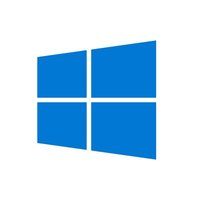Need advice about which tool to choose?Ask the StackShare community!
Linux Mint vs elementary OS: What are the differences?
Introduction
Linux Mint and elementary OS are two popular Linux distributions that offer user-friendly experiences while also providing different features and design philosophies. While both distributions are based on Ubuntu, they have their distinct differences in terms of desktop environment, included software, and overall user experience. In this article, we will explore the key differences between the two operating systems.
Desktop Environment: One of the main differences between Linux Mint and elementary OS is the choice of desktop environment. Linux Mint uses the Cinnamon desktop environment, which offers a traditional and familiar desktop experience with a taskbar, system tray, and start menu. On the other hand, elementary OS uses the Pantheon desktop environment, which is designed to be elegant, lightweight, and reminiscent of macOS. The Pantheon desktop focuses on simplicity and a clean user interface.
Default Applications: Linux Mint and elementary OS also differ in the default applications that are included with the operating system. Linux Mint includes a wide range of pre-installed applications such as Firefox, LibreOffice, and GIMP, providing users with a comprehensive software suite out of the box. In contrast, elementary OS takes a minimalistic approach and includes only a handful of essential applications like a web browser, file manager, and media player. The emphasis is on allowing users to choose and install additional software according to their needs.
Software Updates: Another difference lies in the approach to software updates. Linux Mint follows a more conservative update strategy and focuses on providing stability by keeping major system components at a fixed version throughout the lifespan of a release. This means that users may not always have the latest software versions but benefit from robustness. On the other hand, elementary OS prioritizes providing the latest software updates to users, allowing them to access new features and improvements promptly. This approach can lead to a more cutting-edge but potentially less stable experience.
Design Philosophy: Linux Mint puts emphasis on providing a traditional desktop experience that is familiar to users of other operating systems. It aims to offer a user-friendly environment with a focus on ease of use and customization options. In contrast, elementary OS takes a design-centric approach inspired by minimalism and aesthetics. The operating system strives to provide a cohesive and visually appealing experience with a consistent user interface and polished design elements.
Third-Party Software Support: Linux Mint offers built-in support for proprietary software, codecs, and drivers, making it easier for users to access multimedia content and use devices that may require proprietary drivers. This includes out-of-the-box support for technologies like MP3 playback, Adobe Flash, and some closed-source graphics drivers. On the other hand, while elementary OS aims to provide a free and open-source experience, it takes a more strict stance on proprietary software and codecs, requiring users to manually install them if needed.
Community and User Base: Another difference lies in the community and user base associated with each distribution. Linux Mint has been around for over a decade and has built a large and active community. It benefits from a significant number of contributors, extensive documentation, and a thriving support ecosystem. Elementary OS, while not as established, has also fostered a dedicated community of users who appreciate its design and simplicity.
In summary, Linux Mint and elementary OS differ in their choice of desktop environment, default applications, software update strategies, design philosophy, support for proprietary software, and the nature of their communities. These differences make each distribution unique and cater to different user preferences and requirements.
I liked manjaro a lot, the huge support it has and the variety of tools it provides is just awesome. But due to its parent platform being Arch Linux it has bleeding-edge technology and that meaning, we get updated 'daily', and if we keep updating the system daily, due to the bugs in the recent updates the system sometimes used to crash, this made the OS really unstable. However, one can avoid such crashes using periodical and careful system/package updates. I now use LinuxMint which is based on Ubuntu, and this OS is completely stable with reliable(mostly tested) updates. And, since this OS is backed up by UBUNTU the concerns/questions one can encounter while using the OS can be easily rectified using the UBUNTU community, which is pretty good. Though this is backed up on UBUNTU it most certainly does NOT include the proprietary stuff of UBUNTU, which is on the bright side of the OS. That's it! Happy Computing.
Pros of elementary OS
- Free to use5
- MacOs like feel4
- Fast4
- Stable4
- Elegant3
- Excellent replacement for Windows2
- Good for beginners2
- Very easy to use2
Pros of Linux Mint
- Simple, Fast, Comfort and Easy to Use15
- Stable14
- Elegant12
- Good for beginners11
- Free to use10
- Out of the box3
- Reliable3
- Good software support1
Sign up to add or upvote prosMake informed product decisions
Cons of elementary OS
- Less customization1
Cons of Linux Mint
- Easy to mess up with a few settings (like the panel)3
- Security breaches2
- Idiots can break it because it is open source1



























